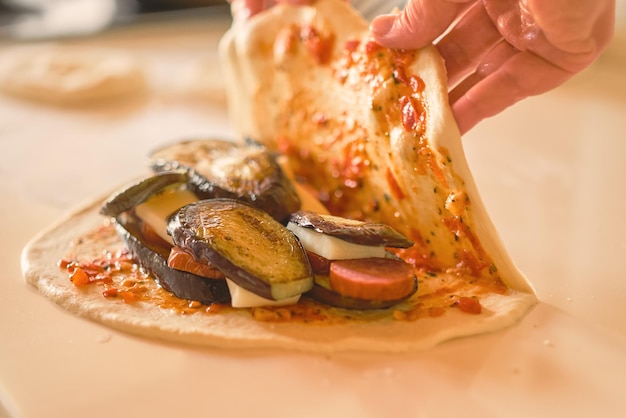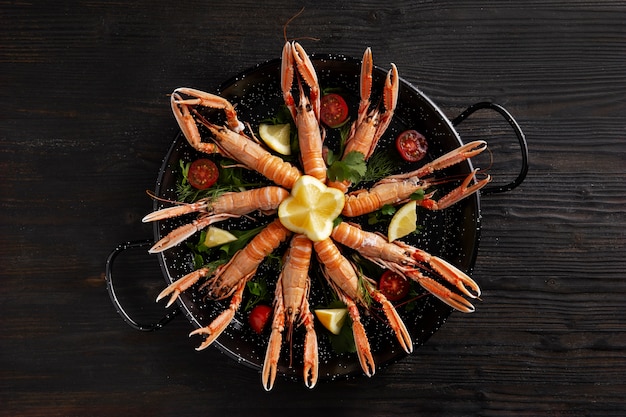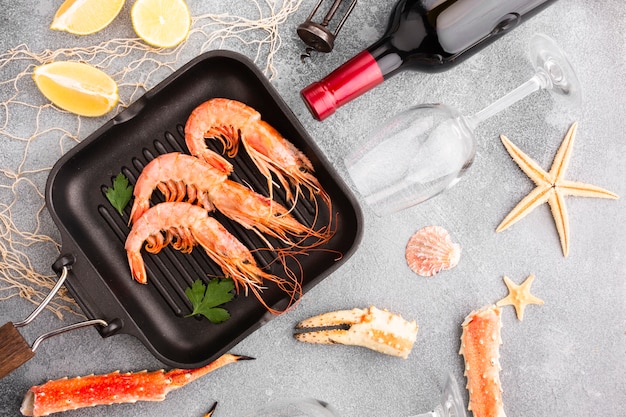(Part 1) Picking the Perfect Crab

The Freshness Factor:
Fresh is king: Look for the freshest crab legs you can find. This is absolutely crucial for the best taste and texture. Think of it this way, the fresher the crab, the closer it is to the ocean's bounty. Check the date: Always look for the freshest date possible. The closer the "best by" date is to today, the better. You want those legs as close to being caught as they can be. Trust your nose: Fresh crab should smell like the ocean, you know, that salty, briny scent. If it smells fishy or sour, it's a red flag.Size Matters
Don't be fooled by size: Those monstrous crab legs might look impressive, but the meat can be stringy and disappointing. Medium-sized legs are generally better: They tend to be a great balance of size and tenderness. Ask for the "jumbo cluster": If you're feeling adventurous, ask your fishmonger about the "jumbo cluster." It typically includes legs, claws, and knuckles, offering a variety of textures and flavors.Frozen or Fresh?
Fresh is the ultimate: If you can find fresh alaskan king crab legs, go for it! It's truly the most authentic experience. Frozen is a great option: frozen crab legs are still delicious and convenient. Just make sure you choose a reputable brand, and you'll be good to go.(Part 2) Preparing Your Crab

Thawing Frozen Crab
Refrigerator thawing is best: The safest and most consistent way to thaw frozen crab legs is in the refrigerator. It takes about 24 hours, so plan ahead! No room temperature thawing: Thawing at room temperature can allow bacteria to grow, so please, avoid it. Cold water is okay: You can thaw crab legs in a bowl of cold water, but make sure you're constantly changing the water to keep it chilly.Cleaning and Prepping
Rinse them off: Gently rinse the crab legs under cold running water to remove any debris. Pat them dry: Pat the crab legs dry with paper towels to ensure they cook evenly.(Part 3) cooking techniques

Steaming
The classic method: Steaming is the traditional way to cook crab legs. It's a gentle process that helps preserve the delicate flavor of the crab. Perfect for a light touch: Steaming is a great choice if you want to enjoy the pure, natural flavors of the crab.How to Steam Crab Legs
1. Fill a large pot with water: Use a pot big enough to hold the crab legs without overcrowding.2. Add aromatics: Toss in some aromatics like lemon slices, bay leaves, and peppercorns to the water. 3. Bring it to a boil: Bring the water to a rolling boil.4. Place crab legs in a steamer basket: Arrange the crab legs in a steamer basket, making sure they're not touching.5. Steam for 10-15 minutes: Steam the crab legs for 10-15 minutes, or until the meat is cooked through. You can tell it's done when the meat is opaque and flakes easily with a fork.6. Let them cool slightly: Let the crab legs cool slightly before serving. This allows the meat to firm up slightly, making it easier to extract.Boiling
Simple and quick: Boiling is a really simple and fast way to cook crab legs. Add some flavor: You can add aromatics to the boiling water to infuse the crab legs with flavor.How to Boil Crab Legs
1. Fill a large pot with water: Use a pot large enough to hold the crab legs without overcrowding.2. Add aromatics: Add aromatics like lemon slices, bay leaves, and peppercorns to the water. 3. Bring it to a boil: Bring the water to a rolling boil.4. Add crab legs: Add the crab legs to the boiling water and cover the pot.5. Boil for 10-15 minutes: Boil the crab legs for 10-15 minutes, or until the meat is cooked through.6. Remove and drain: Remove the crab legs from the boiling water and drain them.Grilling
Adds a smoky flavor: Grilling gives the crab legs that delicious smoky flavor and char. Perfect for outdoor meals: Grilling is a fantastic option for outdoor meals and BBQs.How to Grill Crab Legs
1. Preheat your grill: Preheat your grill to medium heat.2. Brush with olive oil: Brush the crab legs with olive oil and season with salt and pepper.3. Place on the grill: Place the crab legs on the grill and cook for 5-7 minutes per side, or until the meat is cooked through and the shells are slightly charred.Baking
Easy and convenient: Baking is a really easy and convenient way to cook crab legs. Great for larger batches: Baking is ideal for cooking larger batches of crab legs.how to bake crab legs
1. Preheat your oven: Preheat your oven to 400 degrees Fahrenheit.2. Place crab legs on a baking sheet: Place the crab legs on a baking sheet lined with parchment paper. This helps prevent sticking.3. Drizzle with melted butter: Drizzle the crab legs with melted butter and season with salt and pepper.4. Bake for 10-15 minutes: Bake the crab legs for 10-15 minutes, or until the meat is cooked through.(Part 4) The Perfect Dip
No Alaskan king crab leg experience is complete without a delicious dip! There are so many fantastic options, but here are a few of my personal favorites:Classic Melted Butter
Simple and satisfying: Melted butter is the classic dip for crab legs. It's rich, buttery, and allows the delicious flavor of the crab to shine. Sometimes simple is best!Garlic Butter
Elevated classic: Garlic butter adds a touch of savory flavor and aroma to the melted butter. It's a simple upgrade that takes things to the next level.Lemon Butter
Bright and refreshing: Lemon butter adds a bright and refreshing touch to the buttery richness. The acidity of the lemon balances out the richness beautifully.Spicy Remoulade
Kick of heat: Spicy remoulade is a creamy and flavorful dip with a bit of a kick. It's perfect for those who like things with a little heat.Cocktail Sauce
Tangy and sweet: Cocktail sauce is a classic tangy and sweet dip with a hint of horseradish. It's a classic for a reason!Homemade Dipping Sauce
Get creative: There's no limit to your creativity! You can create your own dipping sauces based on your preferences. Use your favorite herbs, spices, and flavors to personalize your dip.(Part 5) Cracking Your Crab
Once your crab legs are cooked, it's time to crack open those shells and get to the juicy meat! This part can be a little tricky, but with the right technique, you can avoid any frustration.The Tools of the Trade
crab cracker: A crab cracker is specially designed for cracking crab shells. It's the most efficient tool for the job. Nutcracker: A nutcracker can be used in a pinch if you don't have a crab cracker. Heavy-duty kitchen shears: Heavy-duty kitchen shears are also a good option for cracking crab legs.The Cracking Technique
1. Identify the weakest points: Look for the weakest points on the shell, usually at the joints.2. Apply pressure: Place the crab leg between the arms of your cracker and apply pressure.3. Crack with confidence: Use a firm, decisive motion to crack the shell.4. Pull the meat out: Once the shell is cracked, you can use a fork or your fingers to pull the meat out.(Part 6) Serving Up a Feast
Now that you've got your crab legs cooked, dipped, and cracked, it's time to serve them up!Presentation is Key
Use a platter or tray: Arrange the crab legs on a platter or tray for a visually appealing presentation. Serve with napkins and bibs: Don't forget napkins and bibs, as crab legs can be messy to eat! Embrace the experience! Garnish with lemon wedges: Garnish with lemon wedges for a touch of freshness. It's a simple but elegant touch.side dishes
Keep it simple: Since crab legs are the star of the show, keep side dishes simple and complementary. You don't want to overpower the delicious crab flavor. Try a green salad: A fresh green salad is a classic accompaniment to crab legs. The crispness and lightness balance out the richness of the crab. Roasted vegetables: Roasted vegetables like asparagus or broccoli add a nice contrast in texture and flavor. grilled corn on the cob: Grilled corn on the cob is a delicious and summery side dish.Drinks Pairing
White wine: Dry white wines like Chardonnay or Sauvignon Blanc pair well with crab legs. The acidity of the wine cuts through the richness of the crab. Sparkling wine: Sparkling wine like Prosecco or Champagne is a festive option. Beer: A light lager or pale ale is a refreshing choice.(Part 7) Leftovers
Got leftovers? Don't worry, there's no need to let them go to waste.Storing
Refrigerate in an airtight container: Store leftover crab legs in an airtight container in the refrigerator for up to 3 days. Freeze for longer storage: You can also freeze leftover crab legs for up to 3 months.Reheating
Reheat gently: Reheat leftover crab legs gently to avoid drying them out. Overheating can make the meat tough. Oven is the best option: Reheat crab legs in a preheated oven at 350 degrees fahrenheit for about 10 minutes. This is a gentler method than the microwave. Microwave is an option: You can also reheat crab legs in the microwave, but they may lose some of their flavor.(Part 8) Some Final Thoughts
Alright, there you have it! Your complete guide to Alaskan king crab legs. Remember, this is just a starting point. Experiment with different cooking methods, dips, and side dishes to find your own perfect combination. And don't be afraid to get messy and have fun! Enjoy the experience, the flavor, and the deliciousness of Alaskan king crab legs.FAQs
What is the best way to cook Alaskan king crab legs?
There's no single "best" way, as it depends on personal preference. Steaming is classic for subtle flavor, while boiling is quick and easy. Grilling adds smoky notes, and baking is perfect for larger batches.
How do I know if my crab legs are cooked?
Crab legs are cooked when the meat is opaque and flakes easily with a fork. The shells will also be red in color. If you're unsure, check the temperature with a meat thermometer. The internal temperature should reach 140 degrees Fahrenheit.
How long do I cook crab legs?
cooking time varies depending on the method, but typically ranges from 10 to 15 minutes. Always check the meat to ensure it's cooked through. Overcooked crab legs will become tough and dry.
What if my crab legs are overcooked?
Overcooked crab legs will become tough and dry. It's better to undercook slightly and check the doneness. You can also reheat slightly if needed.
How do I store Alaskan king crab legs?
fresh crab legs should be stored in the refrigerator and consumed within 1-2 days. Frozen crab legs should be stored in the freezer for up to 3 months. Make sure to wrap them tightly in plastic wrap or aluminum foil to prevent freezer burn.
I hope this guide has been helpful! Now go forth and conquer the world of Alaskan king crab legs!Everyone is watching

Corn on the Cob: The Ultimate Guide to Perfectly Cooked Ears
Healthy MealsAh, corn on the cob. Just the name evokes images of sunny days, barbecues, and that sweet, juicy flavour that ...

Perfect Pork Roast Oven Cooking Time: A Guide to Delicious Results
Healthy MealsThere's something truly satisfying about a perfectly roasted pork. The aroma alone is enough to make your mout...

Ham Cooking Time: How Long to Bake, Smoke, or Boil a Delicious Ham
Healthy MealsAh, ham. It's a classic, isn't it? A real crowd-pleaser, especially around holidays. And when done right, it'...

Scallops: The Ultimate Guide to Perfect Cooking
Healthy MealsAh, scallops. Those delicate, sweet, and utterly delicious morsels of the sea. They hold a special place in my...

Spaghetti Squash: The Ultimate Guide to Cooking and Serving
Healthy MealsRemember that time you saw spaghetti squash at the supermarket, looking all bumpy and strange, and thought, "W...
